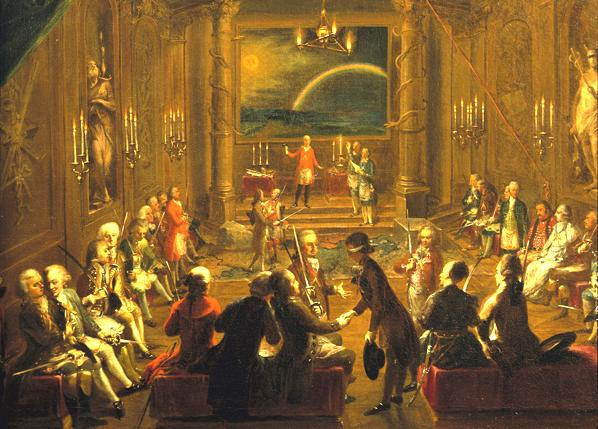La Massoneria è una un’istituzione iniziatica avente come fine l’emancipazione dei suoi aderenti attraverso l’acquisizione della conoscenza. Il termine loggia deriva dall’antico tedesco laubja, che a sua volta deriva da laub (fogliame) e significa capanna o baracca di boscaioli. Laubia indica il luogo accanto a un tempio in costruzione dove si custodiscono gli attrezzi di lavoro e dove ci incontra. Nell’Europa centro-occidentale, quando si tratta di costruire una cattedrale gotica, la loggia viene costruita parallelamente alla chiesa ed è, come questa, rivolta da est a ovest (ex oriente lux). La più antica loggia di cui abbiamo notizia è quella di Kilwinning, in Scozia, operante già nell’anno 1150. I maestri muratori, gli artigiani edili e gli architetti formano – a partire dall’alto medioevo – delle gilde esclusive o logge fortemente gerarchizzate il cui scopo è la difesa degli interessi professionali, la disciplina dei suoi membri e soprattutto la trasmissione dei segreti del mestiere, tra cui la sezione aurea o numero aureo di Pitagora, che è alla base di tutta la filosofia pitagorica e si ritrova come fondamento delle armoniche proporzioni delle cattedrali gotiche. D’altra parte, le gilde provvedono anche alle necessità di mutuo soccorso, che la società del tempo non riesce a soddisfare in altro modo.
Un’altra gilda è documentata a Strasburgo, e sul suo esempio altre se ne ritrovano in città tedesche, austriache, svizzere, ungheresi, finché il 25 aprile 1459 i maestri architetti di tutte le logge si riuniscono a Ratisbona, dove elaborano uno statuto comune alla professione e alle logge. Nel 1563 , settantadue maestri di logge si riuniscono a Basilea per dare alla confraternita un nuovo statuto, che conferma la gerarchia interna di maestri, compagni e artigiani che costituiranno i primi tre gradi della Massoneria. S’istituiscono dei segni di riconoscimento tra i gradi e all’interno dei gradi un simbolismo rituale.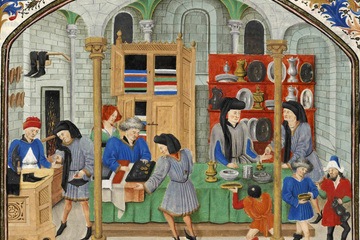
Controverso è il passaggio dalle logge operative, costituite dagli architetti, dai maestri muratori, dagli artigiani edili alle logge speculative, che ammettono al loro interno un numero sempre più preponderante di persone estranee alla loro professione, i membri accettati. Qual’è l’interesse che muove questi ultimi, in genere intellettuali o gentiluomini ricchi e istruiti, ad affiliarsi alla corporazione di un mestiere sicuramente inferiore alla loro condizione? Probabilmente l’esoterismo delle tradizioni degli architetti, di cui la sezione aurea è un esempio, e il loro vanto di un’origine antichissima, risalente addirittura alla costruzione del Tempio di Gerusalemme al tempo di Re Salomone, la rendono affascinante a loro occhi; mentre l’afflusso di denaro liquido, e conseguentemente il ruolo di promozione sociale, i divertimenti e la patina culturale che questo garantisce costituiscono un buon affare per i massoni operativi. Sta di fatto che ad un certo punto questi ultimi si accorgono che nelle loro logge non solo essi sono in minoranza, ma in alcune non vi sono affatto.
Il primo massone speculativo è Sir Robert Moray (1608-1675), che entra nella Massoneria nel 1641 e alla fine diviene gran Maestro della sua loggia, ad Edimburgo. Elias Ashmole (1617-1692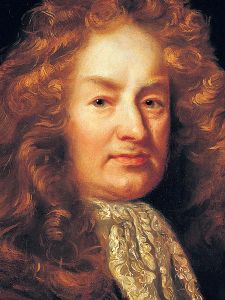 ), studioso dell’occultismo e tra i fondatori della Real Society, entra nella Massoneria nel 1646 a Warrington nel Lancashire. Egli pubblica dei manoscritti di alchimia col nome di Thearum Chemicum Britannicum e un’apologia della Fama fraternitatis e dei Rosa Croce.
), studioso dell’occultismo e tra i fondatori della Real Society, entra nella Massoneria nel 1646 a Warrington nel Lancashire. Egli pubblica dei manoscritti di alchimia col nome di Thearum Chemicum Britannicum e un’apologia della Fama fraternitatis e dei Rosa Croce.
Il 24 giugno 1717 avviene l’atto ufficiale di nascita della Massoneria: quattro logge londinesi, The Goose and Gridiron, The Crown, The Apple Tree e The Rummor and Grape, così chiamate dal nome delle taverne presso le quali ciascuna si riunisce, decidono di darsi una nuova organizzazione centralizzata, cui danno il nome di Grande Loggia di Londra, eleggendo come Gran Maestro il gentiluomo Anthony Sayer. Della logge fanno parte il pastore anglicano Theophile Desaguliers (1683-1744), brillante  volgarizzatore delle teorie newtoniane e membro della Royal Society, presso la quale, oltre che all’interno della loggia, organizza per tutta la vita esperimenti e dimostrazioni scientifiche con l’uso di macchine per istruire affiliati e uomini di cultura, e il pastore presbiteriano James Anderson (1684-1739), cui si devono le Costituzioni adottate dalla società il 14 gennaio 1723. In esse si dichiara tra l’altro che la Massoneria è “il Centro d’unione e il mezzo per annodare una sincera amicizia tra persone che sarebbero rimaste in perpetuo estranee”. Questa affermazione, in un paese dilaniato dalle lotte religiose, la dice lunga sui principi di tolleranza, egualitarismo e umanitarismo che animano i fondatori della Massoneria.
volgarizzatore delle teorie newtoniane e membro della Royal Society, presso la quale, oltre che all’interno della loggia, organizza per tutta la vita esperimenti e dimostrazioni scientifiche con l’uso di macchine per istruire affiliati e uomini di cultura, e il pastore presbiteriano James Anderson (1684-1739), cui si devono le Costituzioni adottate dalla società il 14 gennaio 1723. In esse si dichiara tra l’altro che la Massoneria è “il Centro d’unione e il mezzo per annodare una sincera amicizia tra persone che sarebbero rimaste in perpetuo estranee”. Questa affermazione, in un paese dilaniato dalle lotte religiose, la dice lunga sui principi di tolleranza, egualitarismo e umanitarismo che animano i fondatori della Massoneria.
Fin dai suoi inizi, la Massoneria cerca delle origini illustri, bel al di là delle gilde di architetti, maestri muratori e lavoratori edili che si tramandano i segreti dell’arte. La storia dei Templari, con i contatti che questi ebbero con la cultura araba ed ebraica, ivi incluse delle ipotetiche ricerche nelle vestigia sotterranee dei templi ebraici, è in questo senso l’ideale per poter dare un contesto alla trasmissione dei segreti dell’arte muratoria. Secondo la leggenda, due giorni prima che Filippo il Bello emanasse l’ordine di arresto dei Templari, un carro di fieno tirato da buoi lasciò il Tempio di Parigi, e sotto il fieno si nascondeva un gruppo di loro, guidato da un certo Aumont. Essi si portavano dietro un grosso carico d’oro, forse di produzione alchemica, e i loro oggetti iniziatici. Si rifugiarono in Scozia, dove si sarebbero uniti alla loggia massonica di Kilwinning. In un certo senso essi ripetevano la storia del mitico Hiram, che fu ucciso perché si rifiutò di rivelare i segreti dell’arte, dopo di che il Re Salomone inviò i maîtres elus (maestri scelti) a vendicarne la morte. Ora ad altri maestri sarebbe toccato il compito della vendetta, che sarebbe infine ricaduta sui discendenti di Filippo il Bello, i Re di Francia (tanto che quando Luigi XVI fu ghigliottinato, qualcuno dalla folla balzò sul patibolo e gridò: “Jacques de Molay, sei stato vendicato!”).
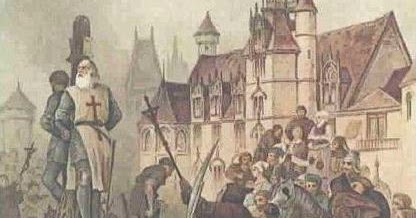
Inizia pertanto un’interpretazione agiografica della storia, che reinventa le gesta dei Templari, dei Rosa Croce, o di altri antenati mitici dei Massoni. Ad esempio la battaglia di Bannockburn (1314), in cui il Re scozzese Robert sconfisse le armate inglesi, superiori di numero, dopo essere stato sul punto di essere sbaragliato, viene attribuita alla carica di un distaccamento di Cavalieri Templari, versione a cui mostrano di credere anche degli autori moderni, Baigent e Leigh (1989). Questa ricerca si traduce nella produzione di una mole di documenti, di dubbia autenticità, tesi a suffragare queste illustri filiazioni. In realtà quello che si vuol ricostruire più che una storia è una metastoria, un resoconto simbolico delle origini, atto a calare la vicenda dei Massoni in un contesto mitico, dove i rituali ricostruiscono il tempo fuori dal tempo delle origini. Da qui, come per i Rosa Croce, all’idea di una antica sapienza che si è tramandata lungo i secoli attraverso l’esoterismo il passo è breve, e per conseguenza l’arruolamento nelle fila dei precursori di una lunga serie di iniziati, il primo dei quali è addirittura Enoch, e dopo di lui i costruttori delle piramidi, Mosè, Pitagora, gli Esseni, gli Gnostici, gli Alchimisti, i Catari, infine i Rosa Croce. Una caposaldo in questo senso è rappresentato da Andrew Michael Ramsay (1686-1743), un giacobita scozzese esule in Francia, membro cattolico romano della famiglia Stuart. Nella sua opera più importante, Les voyages de Cyrus (1727), 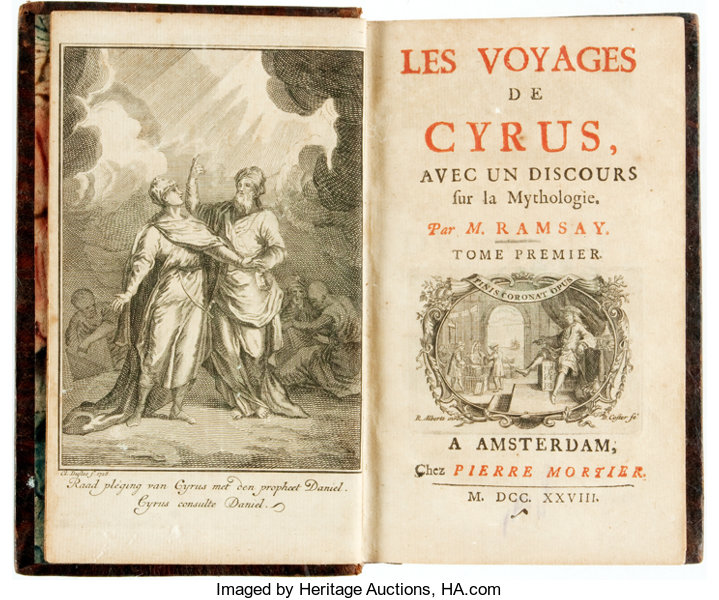 colloca l’origine dell’intero Corpus Hermeticum non in Egitto, ma in Cina. In una conferenza del 1737, egli innesta la cultura massonica nelle crociate medioevali, suggerendo che alcuni cavalieri fossero stati anche spaccapietre, e così avessero avuto accesso alle fondamenta del Tempio di Gerusalemme e ai segreti ivi custoditi, risalenti ai patriarchi dell’Antico Testamento e ai costruttori del Tempio. Egli riprende l’idea di Christopher Love (1618-1651) – poeta e occultista presbiteriano gallese, giustiziato per aver partecipato a un complotto lealista contro il governo puritano – dell’esistenza di un pilastro di bronzo istoriato, che sarebbe stato eretto prima del diluvio universale dal figlio di Adamo ed Eva, Seth, e dal profeta Enoch. L’idea segue la tesi di Josephus (37-100 ca.), considerato un autorevole intermediario tra il Vecchio e il Nuovo Testamento, secondo cui Seth avrebbe costruito delle colonne di mattoni o di pietra per preservare dal degrado degli elementi naturali la conoscenza dei corpi celesti e delle loro proprietà. Su questo materiale si costruisce il Rito Scozzese Antico e Accettato, il cui quarto grado è appunto detto “dell’Arco Reale”, dall’arcobaleno, simbolo dell’alleanza tra Dio e il popolo eletto. Si inizia così a sviluppare una gerarchia che va al di là dei tre livelli iniziali di apprendista, compagno e maestro, e prende il nome di Massoneria Scozzese, per l’asserita filiazione dell’ordine dai Templari attraverso le logge scozzesi; in realtà, l’unica cosa scozzese è il fatto che il rito fu introdotto in Francia dagli esuli giacobiti (Katz, 2005). Comunque, con questa nuova versione si va al di là del mito di Hiram, risalendo ad Enoch, patriarca biblico dei cui viaggi celesti si occupano gli scritti apocalittici: egli avrebbe avuto una visione nella quale gli si ordina di edificare un tempio sotterraneo sorretto da nove archi, e contenente una targa d’oro in cui sono incisi dei caratteri occulti rivelatigli nel sogno. Anche fuori dal tempio vengono eretti così dei pilastri, costruiti in modo da poter resistere al diluvio, uno dei quali è di marmo e reca incisi i segreti del tempio, l’altro è di bronzo e reca incisi i segreti delle arti liberali, e in particolare dell’arte muratoria. Migliaia di anni dopo, gli architetti del tempio di Salomone scoprono il tempio ad archi costruito da Enoch sottoterra, con le preziose iscrizioni, e vengono così in possesso della conoscenza degli antichi misteri.
colloca l’origine dell’intero Corpus Hermeticum non in Egitto, ma in Cina. In una conferenza del 1737, egli innesta la cultura massonica nelle crociate medioevali, suggerendo che alcuni cavalieri fossero stati anche spaccapietre, e così avessero avuto accesso alle fondamenta del Tempio di Gerusalemme e ai segreti ivi custoditi, risalenti ai patriarchi dell’Antico Testamento e ai costruttori del Tempio. Egli riprende l’idea di Christopher Love (1618-1651) – poeta e occultista presbiteriano gallese, giustiziato per aver partecipato a un complotto lealista contro il governo puritano – dell’esistenza di un pilastro di bronzo istoriato, che sarebbe stato eretto prima del diluvio universale dal figlio di Adamo ed Eva, Seth, e dal profeta Enoch. L’idea segue la tesi di Josephus (37-100 ca.), considerato un autorevole intermediario tra il Vecchio e il Nuovo Testamento, secondo cui Seth avrebbe costruito delle colonne di mattoni o di pietra per preservare dal degrado degli elementi naturali la conoscenza dei corpi celesti e delle loro proprietà. Su questo materiale si costruisce il Rito Scozzese Antico e Accettato, il cui quarto grado è appunto detto “dell’Arco Reale”, dall’arcobaleno, simbolo dell’alleanza tra Dio e il popolo eletto. Si inizia così a sviluppare una gerarchia che va al di là dei tre livelli iniziali di apprendista, compagno e maestro, e prende il nome di Massoneria Scozzese, per l’asserita filiazione dell’ordine dai Templari attraverso le logge scozzesi; in realtà, l’unica cosa scozzese è il fatto che il rito fu introdotto in Francia dagli esuli giacobiti (Katz, 2005). Comunque, con questa nuova versione si va al di là del mito di Hiram, risalendo ad Enoch, patriarca biblico dei cui viaggi celesti si occupano gli scritti apocalittici: egli avrebbe avuto una visione nella quale gli si ordina di edificare un tempio sotterraneo sorretto da nove archi, e contenente una targa d’oro in cui sono incisi dei caratteri occulti rivelatigli nel sogno. Anche fuori dal tempio vengono eretti così dei pilastri, costruiti in modo da poter resistere al diluvio, uno dei quali è di marmo e reca incisi i segreti del tempio, l’altro è di bronzo e reca incisi i segreti delle arti liberali, e in particolare dell’arte muratoria. Migliaia di anni dopo, gli architetti del tempio di Salomone scoprono il tempio ad archi costruito da Enoch sottoterra, con le preziose iscrizioni, e vengono così in possesso della conoscenza degli antichi misteri.
La storia di Enoch sottolinea la conoscenza di tutte le cose di cui dispone 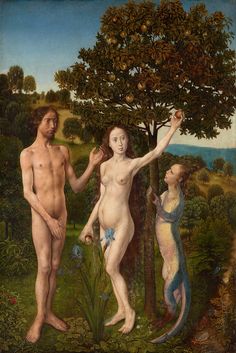 nel giardino dell’Eden, un’onniscenza che ha prodotto i segreti incisi sulle colonne, e che adesso viene tramandata con i misteri dei Massoni. Però apre anche un altro capitolo: Seth, il figlio virtuoso di Adamo, comprende questi concetti fondamentali e li trasmette correttamente alla generazione successiva. Invece, il suo malvagio fratello, Caino, inquina il pozzo della conoscenza e vi introduce numerosi errori e falsità. Pertanto accanto alla iniziazione si profila la minaccia della contro-iniziazione, ossia di un insegnamento esoterico sì, ma difforme dai principi originali, e ciascun sedicente maestro può tacciare i suoi concorrenti e i loro discepoli di praticare la contro-iniziazione. Comunque Enoch, discendente di Seth, preserva fedelmente le proprie conoscenze e le trasmette al genere umano in modo che esse sopravvivono al diluvio, incidendone i principi nel tempio ad archi che egli costruisce. Noè trasmette una parte di questa dottrina alla sua progenie, ma solo quando gli architetti di Salomone rinvengono la targa e i pilastri di Enoch sepolti essa è ripristinata nella sua interezza. I Templari divengono i depositari della conoscenza a seguito dell’esplorazione delle rovine sotterranee del tempio di Gerusalemme; essa è tramandata attraverso la Massoneria “primitiva” delle corporazioni medioevali, fino alla nascita della Massoneria speculativa, che la rende accessibile a chi vuole istruirsi nei suoi misteri.
nel giardino dell’Eden, un’onniscenza che ha prodotto i segreti incisi sulle colonne, e che adesso viene tramandata con i misteri dei Massoni. Però apre anche un altro capitolo: Seth, il figlio virtuoso di Adamo, comprende questi concetti fondamentali e li trasmette correttamente alla generazione successiva. Invece, il suo malvagio fratello, Caino, inquina il pozzo della conoscenza e vi introduce numerosi errori e falsità. Pertanto accanto alla iniziazione si profila la minaccia della contro-iniziazione, ossia di un insegnamento esoterico sì, ma difforme dai principi originali, e ciascun sedicente maestro può tacciare i suoi concorrenti e i loro discepoli di praticare la contro-iniziazione. Comunque Enoch, discendente di Seth, preserva fedelmente le proprie conoscenze e le trasmette al genere umano in modo che esse sopravvivono al diluvio, incidendone i principi nel tempio ad archi che egli costruisce. Noè trasmette una parte di questa dottrina alla sua progenie, ma solo quando gli architetti di Salomone rinvengono la targa e i pilastri di Enoch sepolti essa è ripristinata nella sua interezza. I Templari divengono i depositari della conoscenza a seguito dell’esplorazione delle rovine sotterranee del tempio di Gerusalemme; essa è tramandata attraverso la Massoneria “primitiva” delle corporazioni medioevali, fino alla nascita della Massoneria speculativa, che la rende accessibile a chi vuole istruirsi nei suoi misteri.
Vi abbiamo riproposto il testo scritto da autori invisibili e pubblicato anni orsono nel sito Axis Mundi (non quello odierno,che non ha alcunche'a vedere con quello originale) il quale rappresento' un riferimento sapenziale di rara profondita'.
La prossima pubblicazione trattera’ “I Rosacroce”.
Aldo Reno (The Editor)
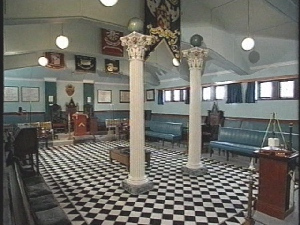
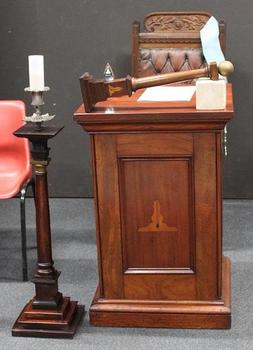
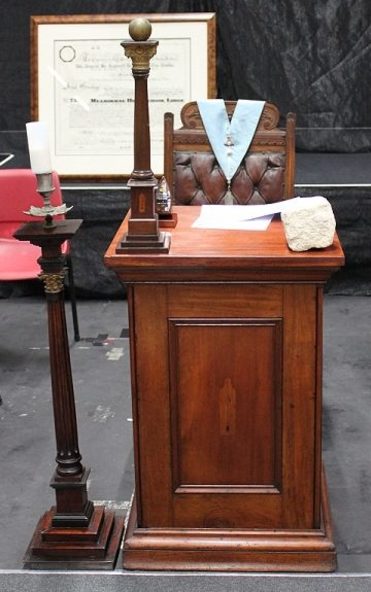
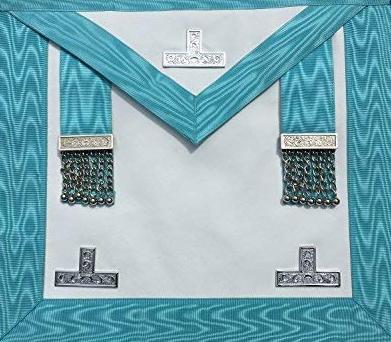
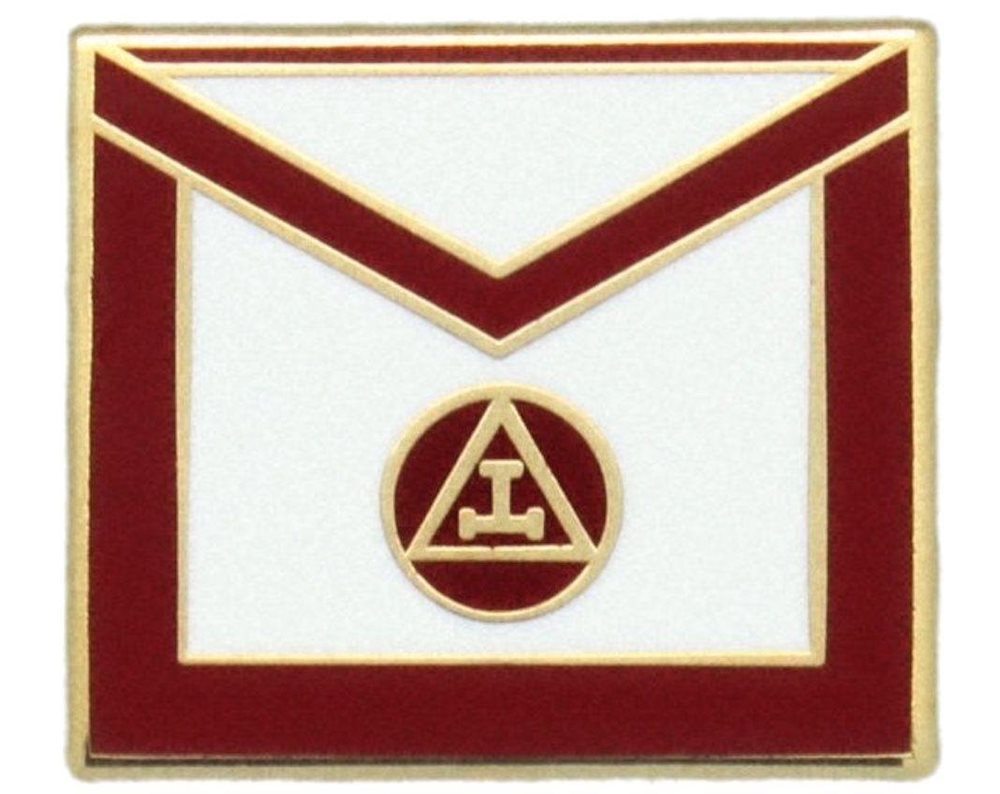


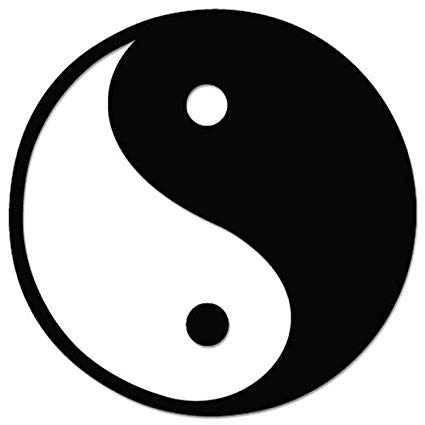 Chinese philosophy has the concept of dualism and the opposites are called YIN and YANG.
Chinese philosophy has the concept of dualism and the opposites are called YIN and YANG.
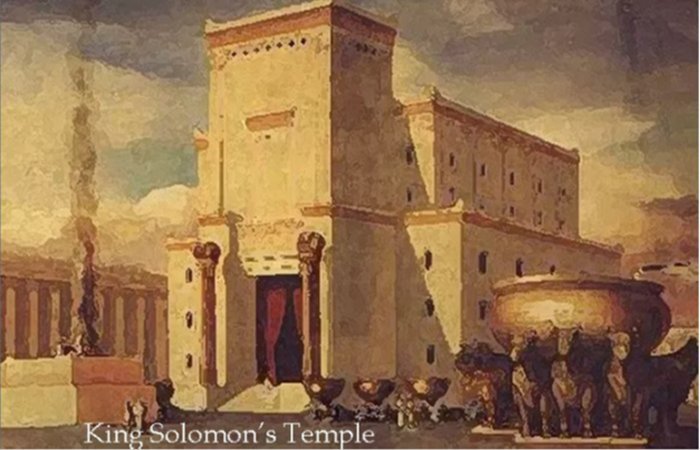
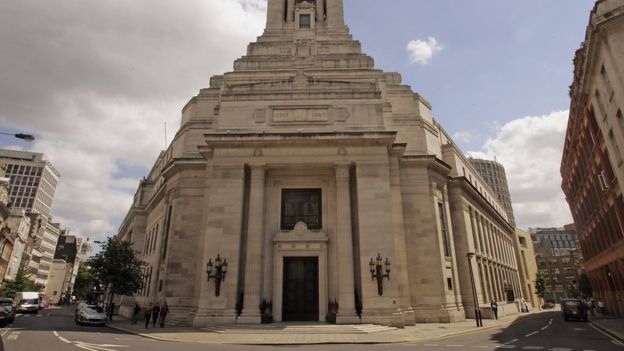
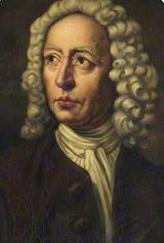
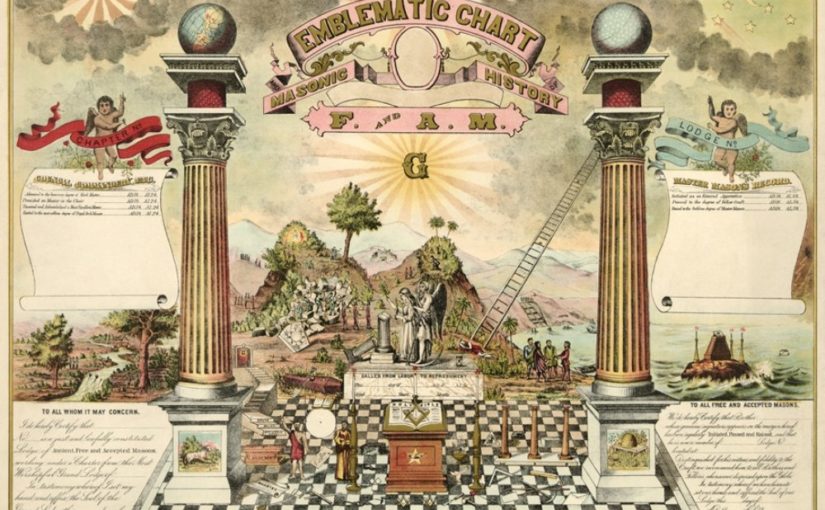
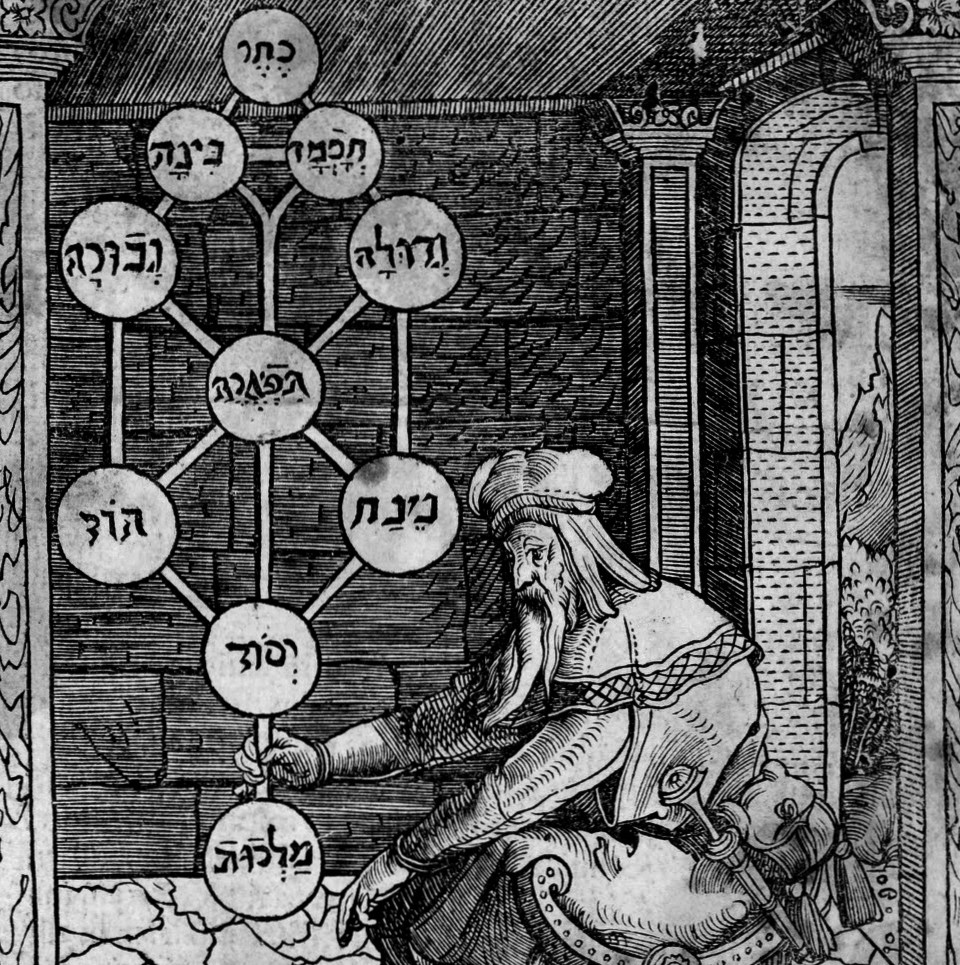
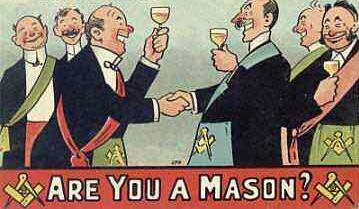
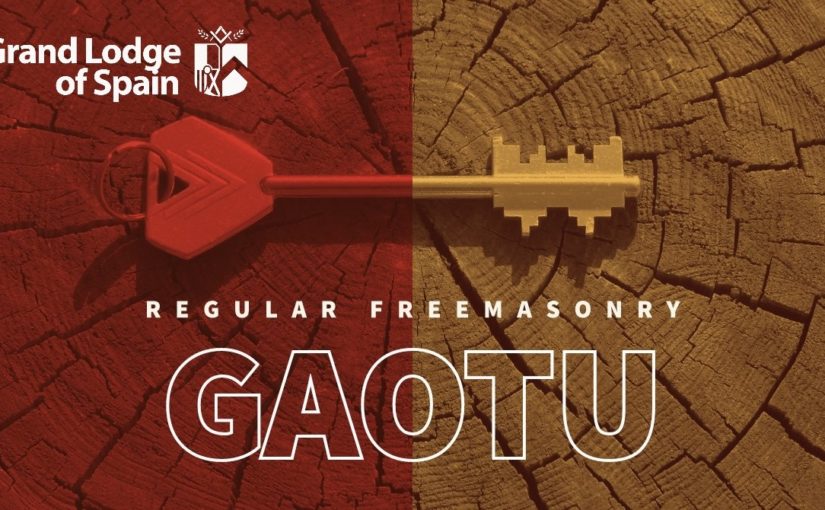
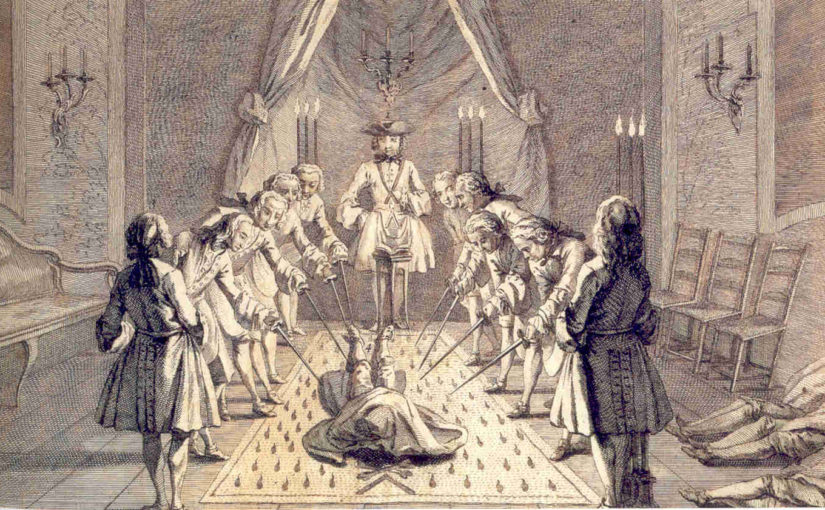
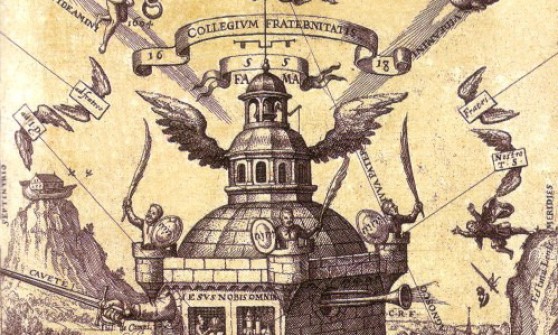
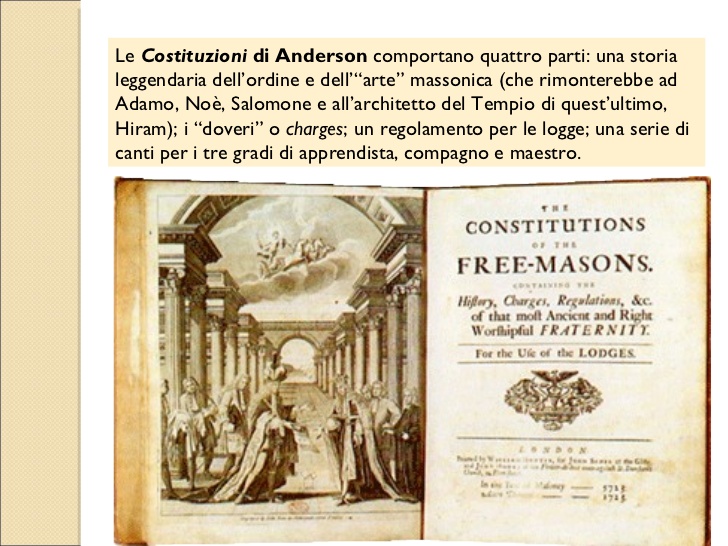 Costituzione di Anderson, « Sincerus Renatus » (un alias di Samuel Richter, pastore luterano, che si ritiene discepolo di Paracelso e di Jakob Böhme) pubblica « La vera e perfetta preparazione della Pietra Filosofale della Fraternità dell’Ordine della Croce d’Oro e della Rosa-Croce » , un trattato d’alchimia sulle pratiche di laboratorio.
Costituzione di Anderson, « Sincerus Renatus » (un alias di Samuel Richter, pastore luterano, che si ritiene discepolo di Paracelso e di Jakob Böhme) pubblica « La vera e perfetta preparazione della Pietra Filosofale della Fraternità dell’Ordine della Croce d’Oro e della Rosa-Croce » , un trattato d’alchimia sulle pratiche di laboratorio.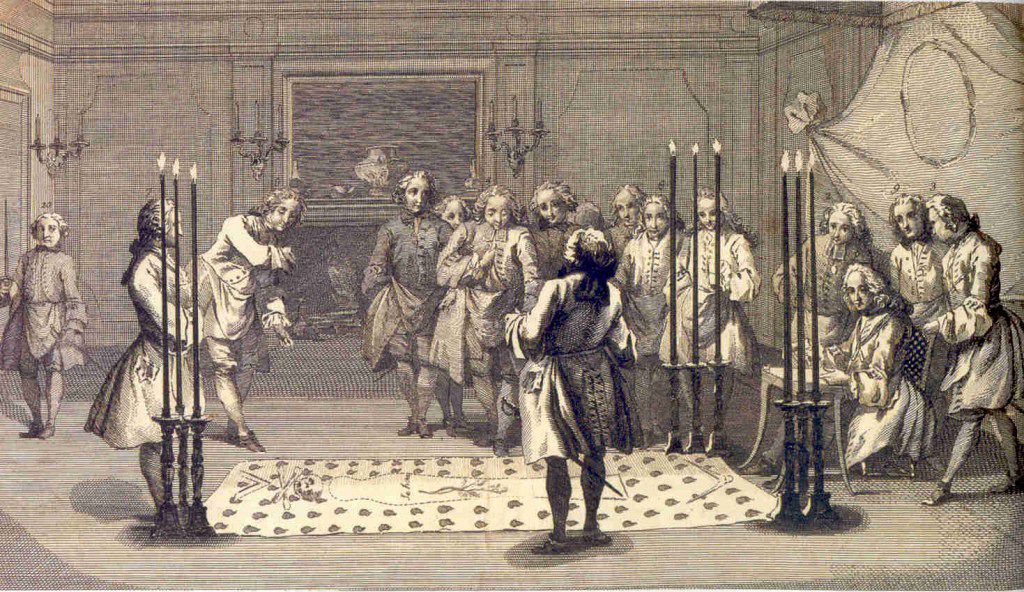
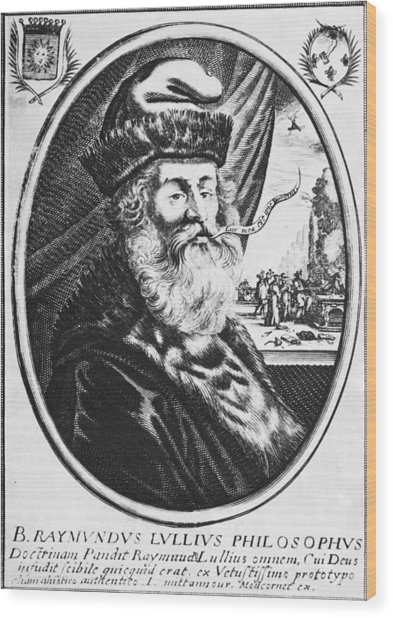 e’ ammesso in tale Ordine e ivi inizia all’Arte un certo Edoardo I dei Plantageneti d’Inghilterra . In seguito solo i membri della casa di York e di Lancaster diverranno dignitari dell’Ordine; ecco perché alla croce d’oro – utilizzata come simbolo dell’Ordine – viene aggiunta anche la rosa che figura negli stemmi delle due famiglie. Così sarebbe nato l’Ordine massonico della Rosa-Croce d’Oro. Qualunque sia la sua filiazione mitica, quest’Ordine nasce in Germania nel XVIII secolo e si sviluppa essenzialmente nella scia della Stretta Obbedienza Templare, il rito massonico più importante nel paese.
e’ ammesso in tale Ordine e ivi inizia all’Arte un certo Edoardo I dei Plantageneti d’Inghilterra . In seguito solo i membri della casa di York e di Lancaster diverranno dignitari dell’Ordine; ecco perché alla croce d’oro – utilizzata come simbolo dell’Ordine – viene aggiunta anche la rosa che figura negli stemmi delle due famiglie. Così sarebbe nato l’Ordine massonico della Rosa-Croce d’Oro. Qualunque sia la sua filiazione mitica, quest’Ordine nasce in Germania nel XVIII secolo e si sviluppa essenzialmente nella scia della Stretta Obbedienza Templare, il rito massonico più importante nel paese.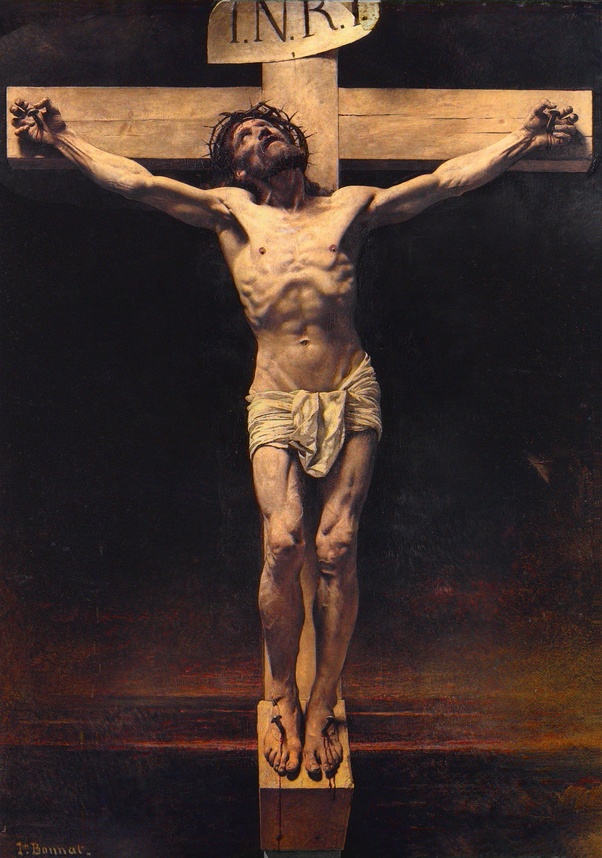
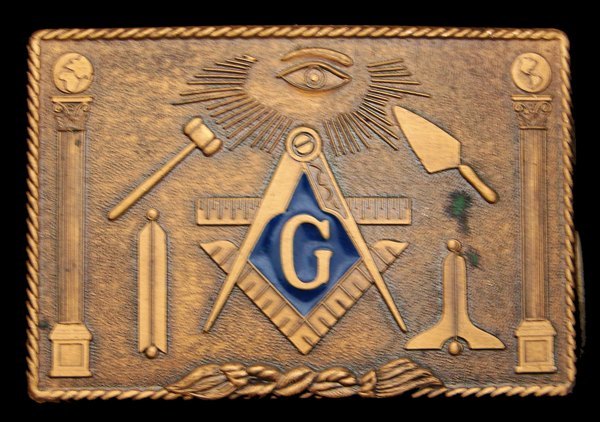

 ), studioso dell’occultismo e tra i fondatori della Real Society, entra nella Massoneria nel 1646 a Warrington nel Lancashire. Egli pubblica dei manoscritti di alchimia col nome di Thearum Chemicum Britannicum e un’apologia della Fama fraternitatis e dei Rosa Croce.
), studioso dell’occultismo e tra i fondatori della Real Society, entra nella Massoneria nel 1646 a Warrington nel Lancashire. Egli pubblica dei manoscritti di alchimia col nome di Thearum Chemicum Britannicum e un’apologia della Fama fraternitatis e dei Rosa Croce. volgarizzatore delle teorie newtoniane e membro della Royal Society, presso la quale, oltre che all’interno della loggia, organizza per tutta la vita esperimenti e dimostrazioni scientifiche con l’uso di macchine per istruire affiliati e uomini di cultura, e il pastore presbiteriano James Anderson (1684-1739), cui si devono le Costituzioni adottate dalla società il 14 gennaio 1723. In esse si dichiara tra l’altro che la Massoneria è “il Centro d’unione e il mezzo per annodare una sincera amicizia tra persone che sarebbero rimaste in perpetuo estranee”. Questa affermazione, in un paese dilaniato dalle lotte religiose, la dice lunga sui principi di tolleranza, egualitarismo e umanitarismo che animano i fondatori della Massoneria.
volgarizzatore delle teorie newtoniane e membro della Royal Society, presso la quale, oltre che all’interno della loggia, organizza per tutta la vita esperimenti e dimostrazioni scientifiche con l’uso di macchine per istruire affiliati e uomini di cultura, e il pastore presbiteriano James Anderson (1684-1739), cui si devono le Costituzioni adottate dalla società il 14 gennaio 1723. In esse si dichiara tra l’altro che la Massoneria è “il Centro d’unione e il mezzo per annodare una sincera amicizia tra persone che sarebbero rimaste in perpetuo estranee”. Questa affermazione, in un paese dilaniato dalle lotte religiose, la dice lunga sui principi di tolleranza, egualitarismo e umanitarismo che animano i fondatori della Massoneria.
 colloca l’origine dell’intero Corpus Hermeticum non in Egitto, ma in Cina. In una conferenza del 1737, egli innesta la cultura massonica nelle crociate medioevali, suggerendo che alcuni cavalieri fossero stati anche spaccapietre, e così avessero avuto accesso alle fondamenta del Tempio di Gerusalemme e ai segreti ivi custoditi, risalenti ai patriarchi dell’Antico Testamento e ai costruttori del Tempio. Egli riprende l’idea di Christopher Love (1618-1651) – poeta e occultista presbiteriano gallese, giustiziato per aver partecipato a un complotto lealista contro il governo puritano – dell’esistenza di un pilastro di bronzo istoriato, che sarebbe stato eretto prima del diluvio universale dal figlio di Adamo ed Eva, Seth, e dal profeta Enoch. L’idea segue la tesi di Josephus (37-100 ca.), considerato un autorevole intermediario tra il Vecchio e il Nuovo Testamento, secondo cui Seth avrebbe costruito delle colonne di mattoni o di pietra per preservare dal degrado degli elementi naturali la conoscenza dei corpi celesti e delle loro proprietà. Su questo materiale si costruisce il Rito Scozzese Antico e Accettato, il cui quarto grado è appunto detto “dell’Arco Reale”, dall’arcobaleno, simbolo dell’alleanza tra Dio e il popolo eletto. Si inizia così a sviluppare una gerarchia che va al di là dei tre livelli iniziali di apprendista, compagno e maestro, e prende il nome di Massoneria Scozzese, per l’asserita filiazione dell’ordine dai Templari attraverso le logge scozzesi; in realtà, l’unica cosa scozzese è il fatto che il rito fu introdotto in Francia dagli esuli giacobiti (Katz, 2005). Comunque, con questa nuova versione si va al di là del mito di Hiram, risalendo ad Enoch, patriarca biblico dei cui viaggi celesti si occupano gli scritti apocalittici: egli avrebbe avuto una visione nella quale gli si ordina di edificare un tempio sotterraneo sorretto da nove archi, e contenente una targa d’oro in cui sono incisi dei caratteri occulti rivelatigli nel sogno. Anche fuori dal tempio vengono eretti così dei pilastri, costruiti in modo da poter resistere al diluvio, uno dei quali è di marmo e reca incisi i segreti del tempio, l’altro è di bronzo e reca incisi i segreti delle arti liberali, e in particolare dell’arte muratoria. Migliaia di anni dopo, gli architetti del tempio di Salomone scoprono il tempio ad archi costruito da Enoch sottoterra, con le preziose iscrizioni, e vengono così in possesso della conoscenza degli antichi misteri.
colloca l’origine dell’intero Corpus Hermeticum non in Egitto, ma in Cina. In una conferenza del 1737, egli innesta la cultura massonica nelle crociate medioevali, suggerendo che alcuni cavalieri fossero stati anche spaccapietre, e così avessero avuto accesso alle fondamenta del Tempio di Gerusalemme e ai segreti ivi custoditi, risalenti ai patriarchi dell’Antico Testamento e ai costruttori del Tempio. Egli riprende l’idea di Christopher Love (1618-1651) – poeta e occultista presbiteriano gallese, giustiziato per aver partecipato a un complotto lealista contro il governo puritano – dell’esistenza di un pilastro di bronzo istoriato, che sarebbe stato eretto prima del diluvio universale dal figlio di Adamo ed Eva, Seth, e dal profeta Enoch. L’idea segue la tesi di Josephus (37-100 ca.), considerato un autorevole intermediario tra il Vecchio e il Nuovo Testamento, secondo cui Seth avrebbe costruito delle colonne di mattoni o di pietra per preservare dal degrado degli elementi naturali la conoscenza dei corpi celesti e delle loro proprietà. Su questo materiale si costruisce il Rito Scozzese Antico e Accettato, il cui quarto grado è appunto detto “dell’Arco Reale”, dall’arcobaleno, simbolo dell’alleanza tra Dio e il popolo eletto. Si inizia così a sviluppare una gerarchia che va al di là dei tre livelli iniziali di apprendista, compagno e maestro, e prende il nome di Massoneria Scozzese, per l’asserita filiazione dell’ordine dai Templari attraverso le logge scozzesi; in realtà, l’unica cosa scozzese è il fatto che il rito fu introdotto in Francia dagli esuli giacobiti (Katz, 2005). Comunque, con questa nuova versione si va al di là del mito di Hiram, risalendo ad Enoch, patriarca biblico dei cui viaggi celesti si occupano gli scritti apocalittici: egli avrebbe avuto una visione nella quale gli si ordina di edificare un tempio sotterraneo sorretto da nove archi, e contenente una targa d’oro in cui sono incisi dei caratteri occulti rivelatigli nel sogno. Anche fuori dal tempio vengono eretti così dei pilastri, costruiti in modo da poter resistere al diluvio, uno dei quali è di marmo e reca incisi i segreti del tempio, l’altro è di bronzo e reca incisi i segreti delle arti liberali, e in particolare dell’arte muratoria. Migliaia di anni dopo, gli architetti del tempio di Salomone scoprono il tempio ad archi costruito da Enoch sottoterra, con le preziose iscrizioni, e vengono così in possesso della conoscenza degli antichi misteri. nel giardino dell’Eden, un’onniscenza che ha prodotto i segreti incisi sulle colonne, e che adesso viene tramandata con i misteri dei Massoni. Però apre anche un altro capitolo: Seth, il figlio virtuoso di Adamo, comprende questi concetti fondamentali e li trasmette correttamente alla generazione successiva. Invece, il suo malvagio fratello, Caino, inquina il pozzo della conoscenza e vi introduce numerosi errori e falsità. Pertanto accanto alla iniziazione si profila la minaccia della contro-iniziazione, ossia di un insegnamento esoterico sì, ma difforme dai principi originali, e ciascun sedicente maestro può tacciare i suoi concorrenti e i loro discepoli di praticare la contro-iniziazione. Comunque Enoch, discendente di Seth, preserva fedelmente le proprie conoscenze e le trasmette al genere umano in modo che esse sopravvivono al diluvio, incidendone i principi nel tempio ad archi che egli costruisce. Noè trasmette una parte di questa dottrina alla sua progenie, ma solo quando gli architetti di Salomone rinvengono la targa e i pilastri di Enoch sepolti essa è ripristinata nella sua interezza. I Templari divengono i depositari della conoscenza a seguito dell’esplorazione delle rovine sotterranee del tempio di Gerusalemme; essa è tramandata attraverso la Massoneria “primitiva” delle corporazioni medioevali, fino alla nascita della Massoneria speculativa, che la rende accessibile a chi vuole istruirsi nei suoi misteri.
nel giardino dell’Eden, un’onniscenza che ha prodotto i segreti incisi sulle colonne, e che adesso viene tramandata con i misteri dei Massoni. Però apre anche un altro capitolo: Seth, il figlio virtuoso di Adamo, comprende questi concetti fondamentali e li trasmette correttamente alla generazione successiva. Invece, il suo malvagio fratello, Caino, inquina il pozzo della conoscenza e vi introduce numerosi errori e falsità. Pertanto accanto alla iniziazione si profila la minaccia della contro-iniziazione, ossia di un insegnamento esoterico sì, ma difforme dai principi originali, e ciascun sedicente maestro può tacciare i suoi concorrenti e i loro discepoli di praticare la contro-iniziazione. Comunque Enoch, discendente di Seth, preserva fedelmente le proprie conoscenze e le trasmette al genere umano in modo che esse sopravvivono al diluvio, incidendone i principi nel tempio ad archi che egli costruisce. Noè trasmette una parte di questa dottrina alla sua progenie, ma solo quando gli architetti di Salomone rinvengono la targa e i pilastri di Enoch sepolti essa è ripristinata nella sua interezza. I Templari divengono i depositari della conoscenza a seguito dell’esplorazione delle rovine sotterranee del tempio di Gerusalemme; essa è tramandata attraverso la Massoneria “primitiva” delle corporazioni medioevali, fino alla nascita della Massoneria speculativa, che la rende accessibile a chi vuole istruirsi nei suoi misteri.
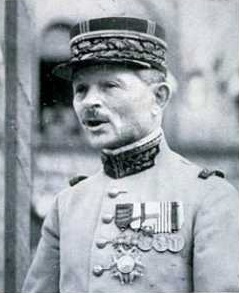 , and the Deputy Prime Minister Marshall Philippe Petain. Churchill flew to France on 11th June to meet Reynaud, Petain and Weygand; he discussed with them the defence of Paris by guerrilla warfare and house-to-house fighting, not knowing that Weygand had already ordered that Paris, which by now was almost deserted, be surrendered to the Germans. Petain and Weygand, who shared right-wing, anti-republican authoritarian and vehemently anti-communist views, were concerned that if the government went abroad the country would be broken up and easy prey for German and Italian colonisation. They wanted the French forces to retain enough power to repel communist overthrow. When Churchill returned to England that evening, it was clear that France was about to fall. He returned to Tours on 13th June, and Reynaud asked for a release from a previous agreement that he would not seek an armistice with the Germans without Britain’s consent.
, and the Deputy Prime Minister Marshall Philippe Petain. Churchill flew to France on 11th June to meet Reynaud, Petain and Weygand; he discussed with them the defence of Paris by guerrilla warfare and house-to-house fighting, not knowing that Weygand had already ordered that Paris, which by now was almost deserted, be surrendered to the Germans. Petain and Weygand, who shared right-wing, anti-republican authoritarian and vehemently anti-communist views, were concerned that if the government went abroad the country would be broken up and easy prey for German and Italian colonisation. They wanted the French forces to retain enough power to repel communist overthrow. When Churchill returned to England that evening, it was clear that France was about to fall. He returned to Tours on 13th June, and Reynaud asked for a release from a previous agreement that he would not seek an armistice with the Germans without Britain’s consent.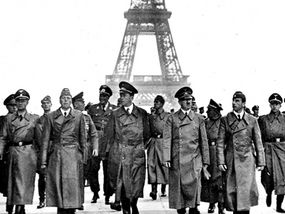 On 22nd June an Armistice, the Second Compiegne Agreement, was signed with Germany. The Northern and Western parts of France, constituting about 60% of the country, were occupied by Germany. The remainder was under the direct French control of a new government based in the town of Vichy. Both the Zone Libre (Vichy) and the Zone Occupee (North and West) were nominally under the control of the Vichy government. One of the conditions of reaching the armistice was that France would not have its territory divided up between Germany and Italy. The demarcation lines existed until the invasion of North Africa by the Allies in Operation Torch on 8th November 1942, when Germany took control of the whole of France.
On 22nd June an Armistice, the Second Compiegne Agreement, was signed with Germany. The Northern and Western parts of France, constituting about 60% of the country, were occupied by Germany. The remainder was under the direct French control of a new government based in the town of Vichy. Both the Zone Libre (Vichy) and the Zone Occupee (North and West) were nominally under the control of the Vichy government. One of the conditions of reaching the armistice was that France would not have its territory divided up between Germany and Italy. The demarcation lines existed until the invasion of North Africa by the Allies in Operation Torch on 8th November 1942, when Germany took control of the whole of France.